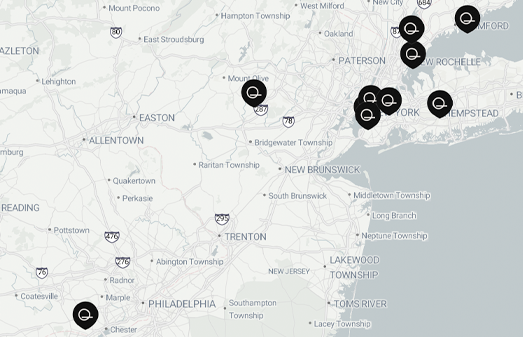INVERTED NIPPLE CORRECTION SURGERY
Dr. Qazi, MD, Board-Certified Surgeon
Dr. Sadaf Qazi is a cosmetic surgeon with expertise in facial and body procedures, including treatments with toxins and fillers, and anti-aging treatments such as Sculptra and Radiesse. Additionally, Dr. Qazi specializes in buttocks anti-aging procedures. Proficient in administering fillers, neurotoxins, and biostimulators, Dr. Qazi also specalizes in tummy tuck, breast augmentation, fat transfer (BBL), and blepharoplasty & liposuction.

WHY STUDIOMD
We have been leader in the field of cosmetic laser and medicine since 2008
And in those 14+ years, we have performed more than 100,000 treatments on all skin types with your safety as our top concern.
We are conveniently located in NY, NJ, and CT; currently with 9 locations and counting.
Easy Peasy!
Submit Form Below or Click to Book Online or Call (212) 219-1990
FREQUENTLY ASKED QUESTIONS
The remaining 10% of women have flat or inverted nipples. You can even have a mismatched pair, such as one nipple higher than the other, or only one is inverted or flat.
Knowing this may bring relief if you are concerned that your nipples are not "normal”. Even if you feel weird about your nipples, know that you are among a considerable percentage of people. But if you sense your nipples are signaling potential complications, they are worth investigating. And you should see a Breast Care Specialist.
● Surgery with partial preservation of milk ducts
In this form of surgery, the doctor will perform a parachute flap technique and there should be no change in how the nipple feels afterward. Having numbed your breast, the surgeon makes an incision around the base of the nipple. While still attached, your nipple and areola are picked up from the breast and sutured back pointing out. Finally, the surgical area is carefully stitched and covered with bandages. ● Surgery with detached milk ducts
This is the most common method and you won’t be able to breastfeed afterward, because your milk ducts will be completely cut off. In this technique, a cut is made in the base of the nipple, and milk the ducts are cut to release the areola from the breast tissue that will be later pulled out. Finally, the surgical area is carefully stitched and covered with bandages.
● Inversion grade 1
If by squeezing the areola, your nipple easily bumps out and holds its form, not instantly returning inwards, you might have grade 1 inversion nipples. This type of inversion usually doesn't cause any problems for breastfeeding and the nipple can be easily pushed out by hand. You may be discontent with how it looks, but it is not problematic in terms of swelling tissue or mammary duct ectasia. And does not require inverted nipple correction surgery.
● Inversion grade 2
In this scenario, after being pulled out and released the nipple quickly retracts inwards. If that is your case, you can experience problems breastfeeding and have more chances of swelling tissue and mammary duct ectasia.
● Inversion grade 3
With this grade, there's no change seen after the nipple is pulled. It remains inverted despite any effort. It is a more serious stage of nipple inversion that usually requires medical intervention. The risk of rashes, sore nipples, and recurrent mastitis can make breastfeeding nearly impossible. If that is your case, inverted nipple correction surgery is often recommended.
LOCATIONS & DIRECTIONS






